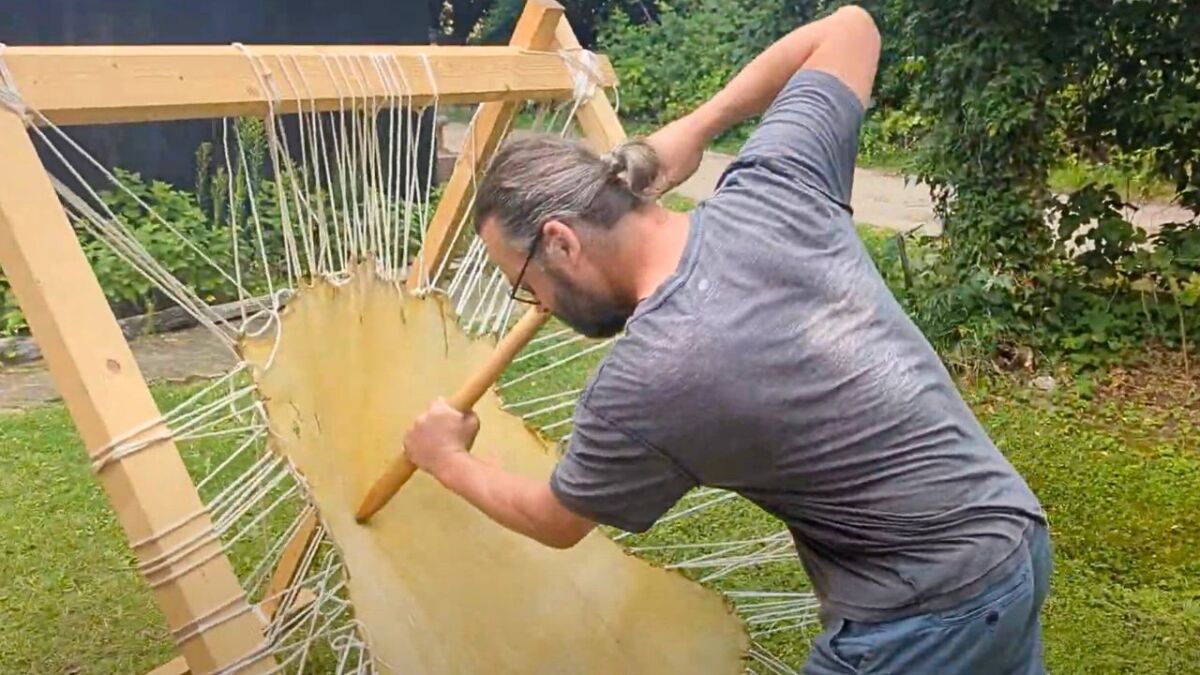
Why I use leather and wool as gear - my motivations and how I reconcile this with my moral
👉 The key facts from this guide
- I use leather and wool for more authenticity and closeness to nature in my equipment.
- Transparency in origin and respect for the lives of animals are important to me.
- I focus on local, smaller production methods with a low environmental impact.
- Traditional craftsmanship plays a major role for me.
- Durability and robustness are crucial for outdoor equipment.
- I want to inspire a more conscious approach to resources.
I stand in the wilderness, surrounded by nature, but something is not right.
My equipment, it feels unfamiliar. Do you know that feeling too?
I have chosen leather and wool because it is more than just material.
It's about my connection to nature, about authenticity.
But how does that align with my values, I wonder. Is it okay to use these materials?
I share with you why I made this choice and how I align it with my beliefs.
It's a return to the roots, a path that combines respect and sustainability. Let's explore together how this works.
The call for authenticity and closeness to nature
Imagine standing in the green, the ground beneath your feet is real, the wind at your back - wild and free.
But something doesn't fit. Why?
Because your outfit is more show than substance.
Synthetic instead of authenticity.
Plastic instead of soil.
Sound familiar?
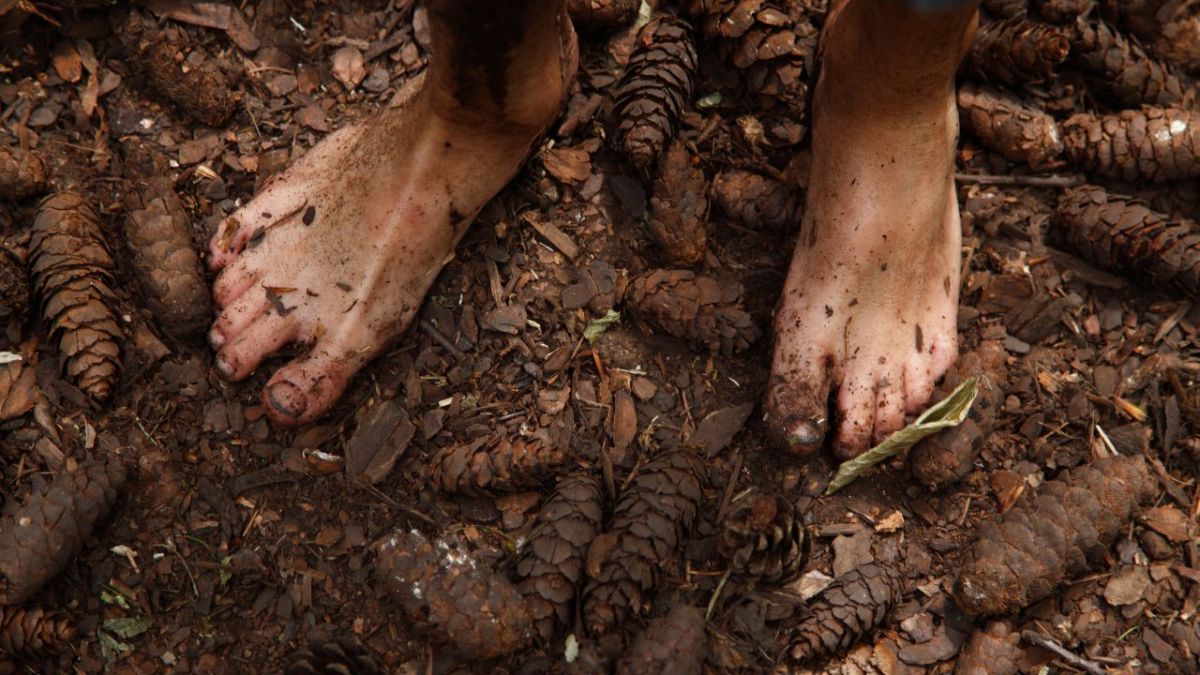
My Aha Moment
I stood there, in the middle of nature, and still felt disconnected.
Too many kilometers between me and what was real.
I had rubber and plastic on my feet. 2 to 3 cm of plastic separated my bare feet from the forest floor.
On my body, I mostly had synthetic materials, combined with cotton.
And then - a jolt.
A transformation from within.
I wanted to change my style, my consumption.
Back to materials with character, to appreciating what really matters.
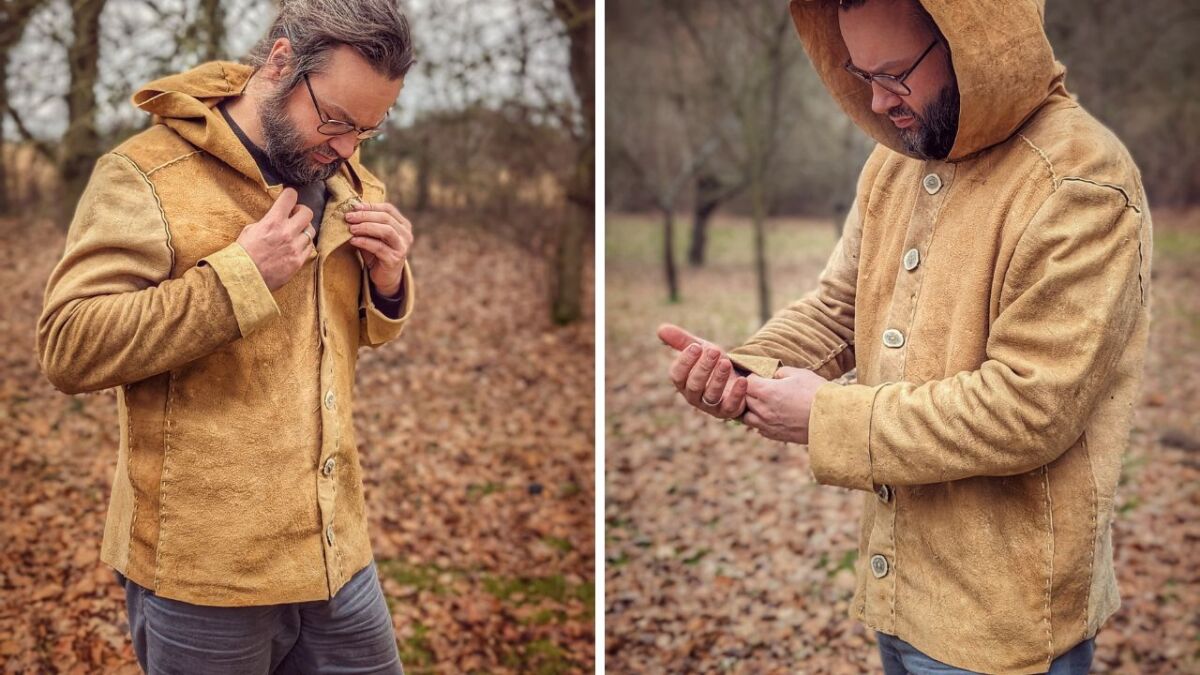
The longing for authenticity
You might know this?
The longing for something tangible in this digital world.
For clothing that tells stories.
After equipment that becomes more beautiful with every scratch, not more broken.
And that's what my story will be about today.
My Relationship with Leather and Wool
A story behind every thread
Imagine a cold morning, the air is fresh. You open your eyes and the first thing that touches your skin is the warm kiss of wool.
Not just a material - but a piece of history.
Honestly, I have fallen in love with leather and wool, with their robust nature, their ability to breathe, to live.
Leather and wool are not just materials to me. They are witnesses of time, carriers of stories, symbols of life.
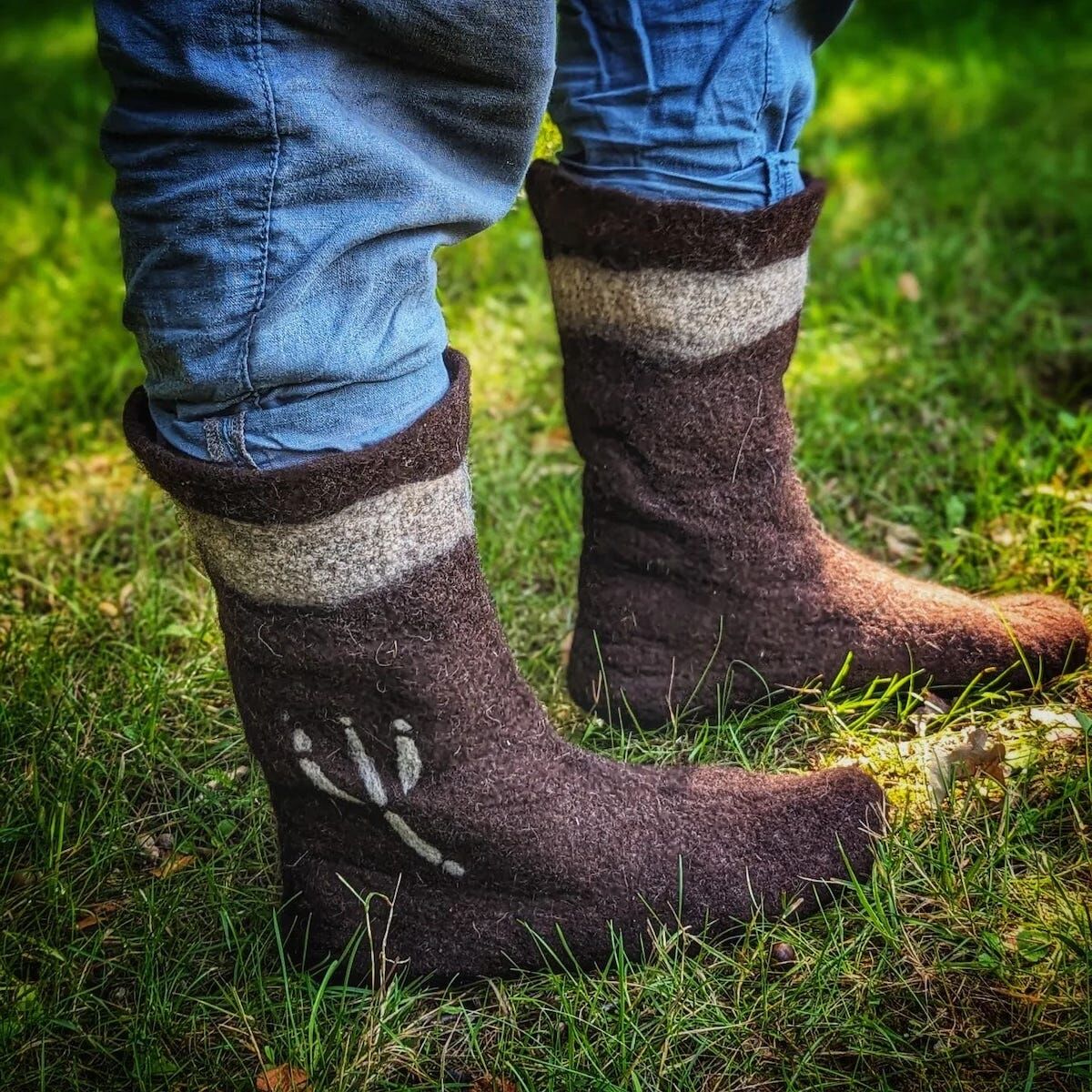
A Tribute to Nature - Respect for Animals and Their Lives
Leather and wool - they come from living beings - we sometimes forget that.
When I wear a piece of leather, it's like a promise to never forget where it came from.
But that only works if I know where it came from. Through which hands it passed.
Every time I touch my leather or wool, I feel awe.
Wearing this material means to me, honoring a piece of the animal's life.
I take time to reflect, consciously choose, and give thanks to nature for its gifts.
Authentic to the core - The significance of materials with a history
I reach for my old leather jacket and it tells me a thousand stories - of rain showers, campfire nights, of the patina of life.
Wool envelops me, knowing that it is part of a much larger pattern.
Authenticity - that's the word echoing in my mind when I feel the substantial difference between what is genuine and what is merely an illusion of authenticity.
Nothing has more soul than what is truly authentic - and leather and wool, they are as authentic as it gets.
Read also
Bark tanning (vegetable tanning) - A guide on how to tan a fur or skin yourself without prior knowledge - With the step-by-step guide to bark tanning, beginners can learn how to easily tan a fur or skin and process it into leather.
Respectful Handling of Animal Materials
Transparency is the key
If you're like me, you don't just buy blindly.
You want to know where your leather and wool come from. Transparency is non-negotiable.
I researched, asked, informed myself. But it was complicated.
Leather comes from Asia, Africa, and who knows where else. How can I establish a connection to the material?
It's about knowing:
- Where do the materials come from?
- How were the animals treated?
- How did the animals live?
- What path do the materials take?
- Through whose hands did the materials pass?
And I realized: Only with answers can I act responsibly.
And if the answers don't fit?
I kept searching.
The appreciation for what we wear begins long before the first wear.
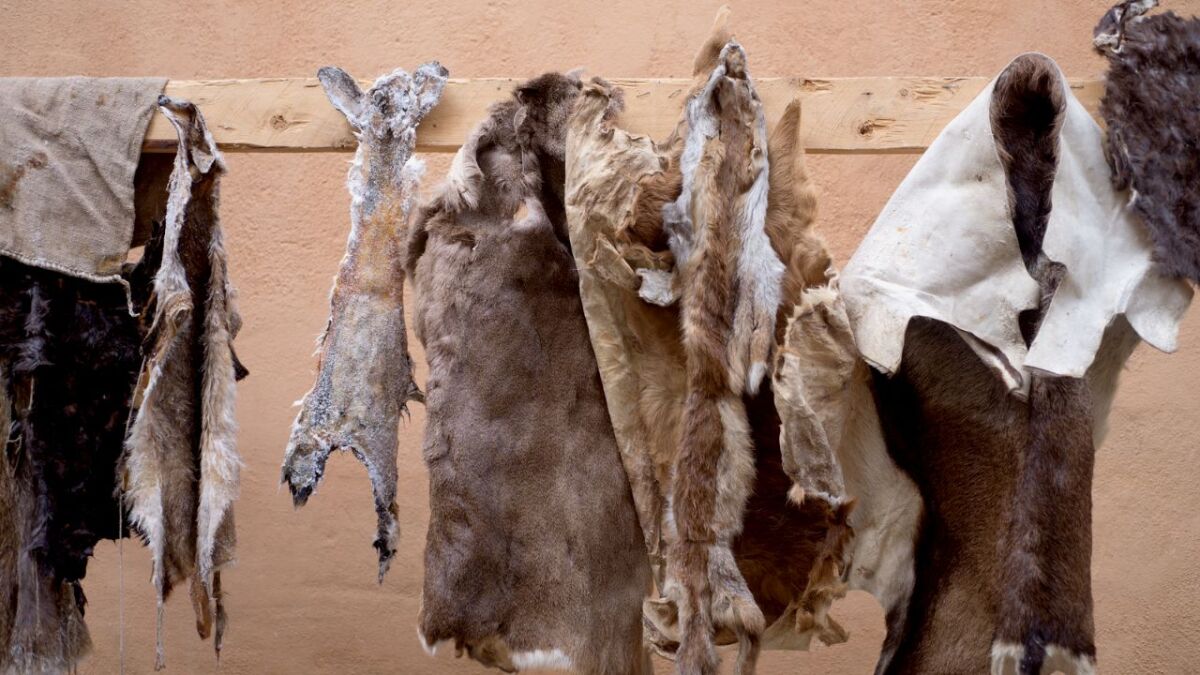
The Ethics Aspect: More Than Just Material
We as conscious consumers have the power to change industry standards.
Here is what I do:
- I choose local producers: Short distances mean real relationships and a smaller footprint.
- I support responsible craftsmanship: Craftsmen who honor their craft also honor the source.
- Sustainability as a priority: Every piece of genuine leather, every fiber of wool - they will not burden the earth.
The fact is: How we handle our animal materials reflects our respect for life.
I want every jacket, every boot, to be a tribute to the life from which they originated.
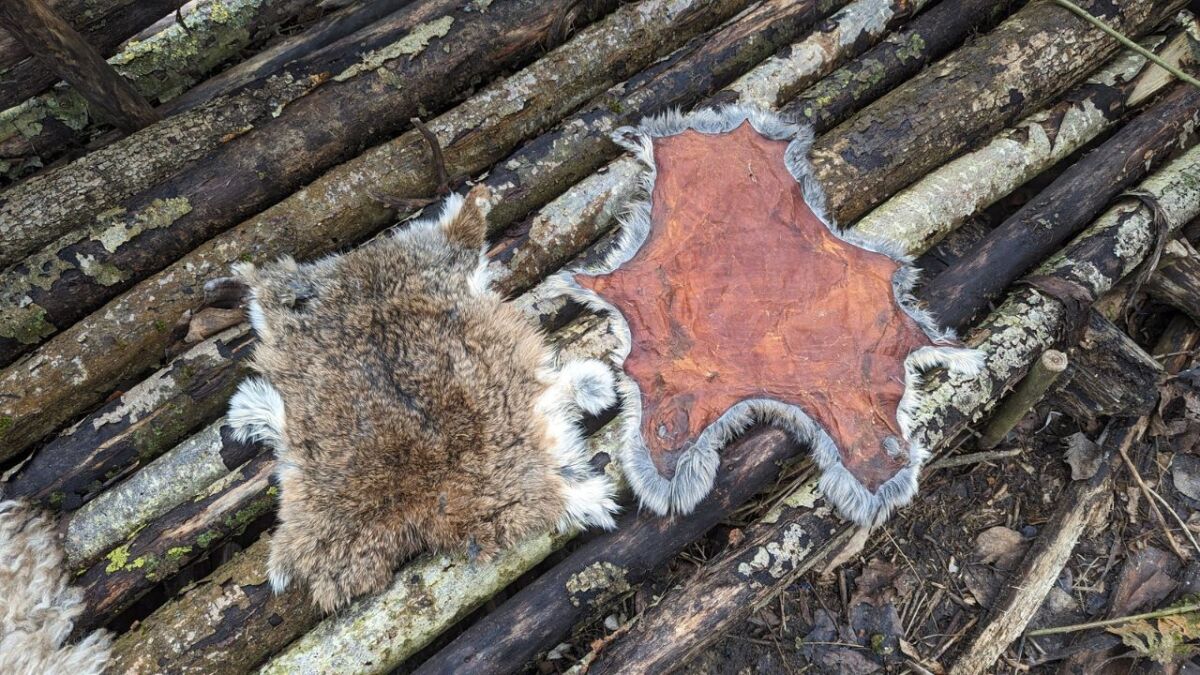
Practical Application of my Philosophy - Self is the Carrier
Let me tell you about my trip to the real Tun.
I have decided to no longer just be a buyer, but a creator. From an old piece of leather, a belt was made, from an old sheepskin - a vest. Why?
- Individuality: My pieces are unique. Just like me.
- Durability: I build what lasts, not what is quickly replaced.
- Connection: Every stitch connects me more with the material and its origin.
- Preservation: I learn old craftsmanship techniques and pass them on.
Appreciation increases with every cut
Do you know how satisfying it is to create with your hands?
Every stitch I made, made me appreciate the material even more.
- Handicraft grounds: It is meditative and connects me with the ancient art of craftsmen.
- Appreciation grows: I recognize the work that goes into everything - even in what I haven't made myself.
- Mistakes make beauty: Every imperfection in what I create is perfect in its authenticity.
It is an adventure of DIY, a journey to the roots, a step away from consumerism.
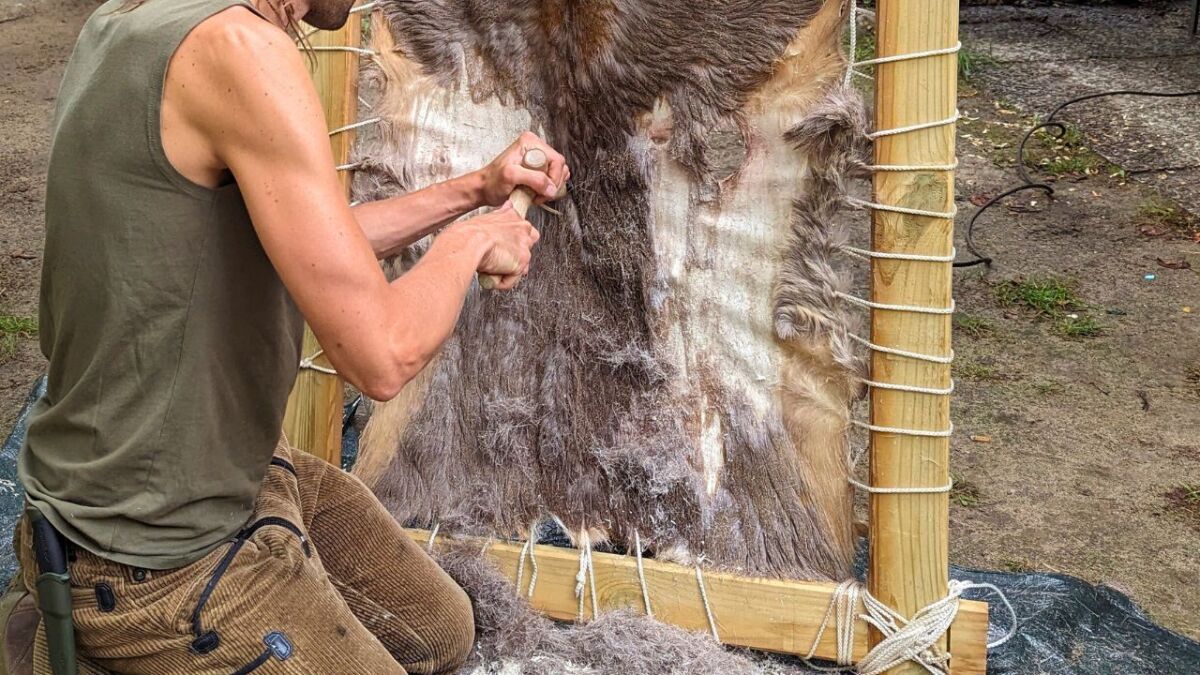
Arguments for using self-tanned leather and wool in equipment
Well, you could now ask:
"Martin, why don't you just use ecologically and ethically produced cotton?"
Good question, let me delve deeper into that.
Organic cotton is a great thing, no doubt, but it doesn't compare to the qualities of leather and wool for me.
👉 Self-tanned leather and hand-spun or felted wool are worth their weight in gold when it comes to durability, robustness, and longevity.
Cotton? It's great, don't get me wrong, but it doesn't make it to the podium in this race.
Organic cotton is great for a summer day, but when I'm out in the woods for 10 days, I need to be able to rely on my gear.
Leather blocks wind, wool retains warmth - even when wet.
Every piece of leather I have tanned and every wool thread I have spun feels like a treasure. Why?
- Minimal waste: Leftovers are turned into patches, patches, even buttons.
- Resource efficient: I use what is already there. No new purchases, no waste.
- Extremely long durability: As an example: I pass down a leather jacket to my great-great-great-grandchildren.
- No trash: If I ever lose my clothes in the forest, they will decompose. No metal, no plastic involved. A cycle is closed.
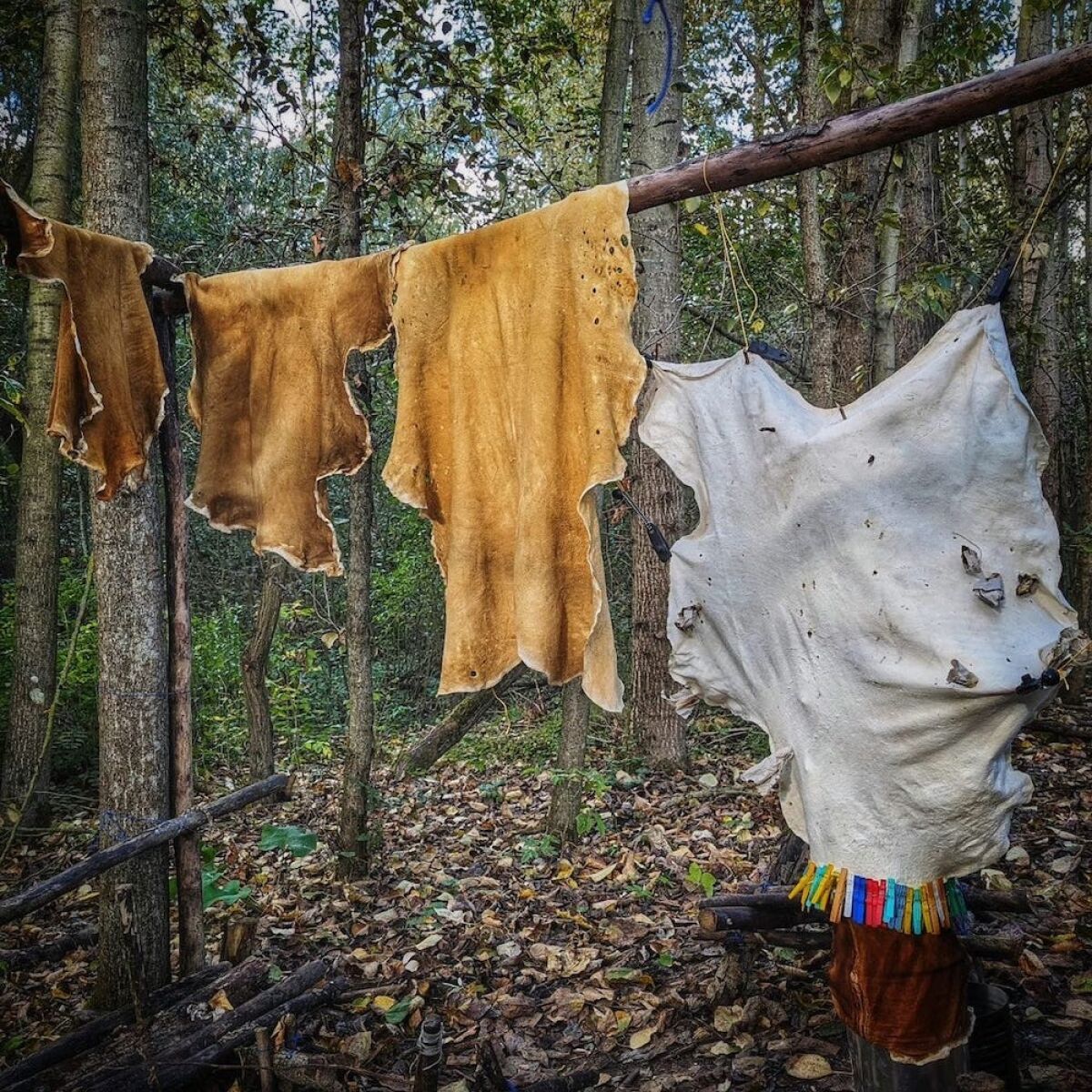
Keeping Traditions Alive
I have learned how my ancestors and indigenous or native peoples lived, and I am eager to preserve their skills.
And yes, I also question traditions because some are simply no longer contemporary.
- Preserving knowledge: Preserving old techniques such as tanning, felting, spinning, and sewing could be more useful one day than you think.
- Promoting cultural exchange: Perfecting your skills and sharing them with like-minded people.
And there is a reason why our country produces these "resources". They are made for our climate.
- Customization: Leather and wool from here are tailored to our conditions.
- Independence: Self-sufficiency strengthens and makes us independent of distant supply chains.
Lessons from my Ancestors - Inspired by Indigenous Practices and Respect for Nature
The wisdom of indigenous peoples has deeply inspired me. I have learned:
- Use everything: Don't waste anything because in nature almost everything has value.
- Work with nature: Not against it, but hand in hand - that is the key to survival.
These points are not just arguments for me, they are convictions that guide me every day.
If you share my experiences or are curious, dare to take this alternative path. It could change everything.
Read also
The most common stitching patterns for sewing buckskin - Learn which sewing techniques and stitches are best suited for soft buckskin - I'll show you 5 common hand stitches from natural crafts.
Your Questions, My Answers
Maybe you still have some questions, then you will find all the answers from me about my motivations here.
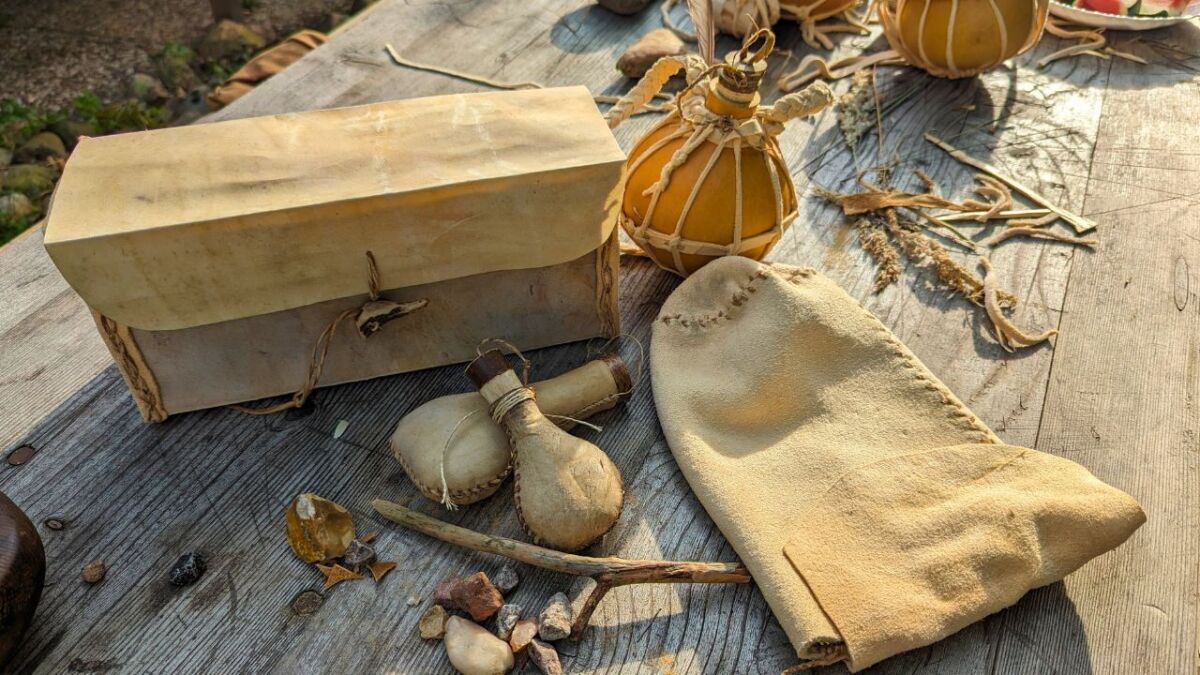
How do you justify the use of animal products when animals may suffer or be killed for leather and wool?
I am very careful to ensure that the leather and wool I use come from animals that have led a free and species-appropriate life. I know the hunters from whom I source and know how they treat their animals with respect.
Similarly, with the animals from enclosures, where I know the owners and have seen the living conditions myself. It is important to me that the animals were treated with dignity during their lives and that their death was not in vain.
How can you ensure minimal environmental impact when purchasing leather and wool?
By sourcing materials directly from local hunters and farms, my ecological footprint is greatly reduced as there is no need for long transportation routes.
In addition, industrial processing and mass production are avoided, which in turn saves energy and resources and protects the environment.
Why don't you use plant-based or synthetic alternatives that don't require the killing or exploitation of animals?
The robustness and durability of leather and wool are crucial to me - especially in the outdoor sector. These materials are extremely resilient and provide natural protection against weather conditions.
You can easily decompose them if they get lost, thus not burdening the environment with permanent waste. In addition, they cannot be replaced in their function by any synthetic fiber, as they possess unique insulating and breathable properties.
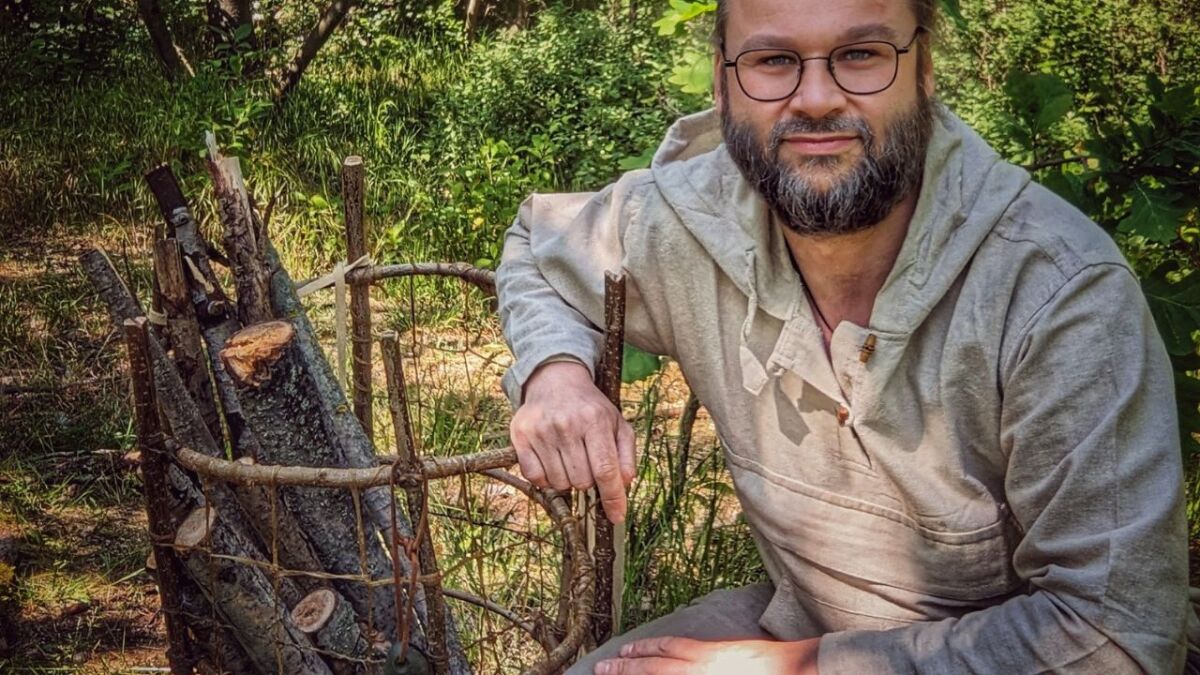
How do you ensure transparency and ethical manufacturing conditions?
I rely on personal contact and in-depth conversations with hunters and gamekeepers to understand the background of the materials. Through direct sourcing and local procurement, I am able to trace the origin of the materials accurately (I even know the names of some animals), which provides me with ethical transparency.
How can you guarantee that the information about the origin and the conditions under which the animals have lived is accurate?
The guarantee arises from personal relationships and the trust that has been built up over years with the local hunters and farm owners. When I, personally, know the source of my materials and can trust these people, the security regarding the authenticity of their information also increases.
How do your values align with respect for life and the avoidance of animal suffering?
I firmly believe that as humans, we are part of the natural cycle and that responsible use of animal products is possible when it is accompanied by respect and appreciation for the lives of animals. I consciously choose my materials and ensure that with every product I use or create, the animals and their lives are honored.
How do you reconcile your lifestyle with the ideals of veganism and animal rights?
I respect the decisions of vegans and animal rights activists, but I select a different path. My approach is based on only using products from animals that have led a dignified life.
Wild animals that have been able to enjoy their natural habitat are at the center of my personal ethics. This is how I contribute to animal welfare and the sustainable use of natural resources.
How low is your ecological footprint really when you use leather and wool?
My ecological footprint is very low due to the local and direct sourcing of materials, avoidance of industrial processing, and consideration of natural cycles.
I am trying to minimize my impact by consciously using and reusing materials and not creating any additional burdens on the environment.
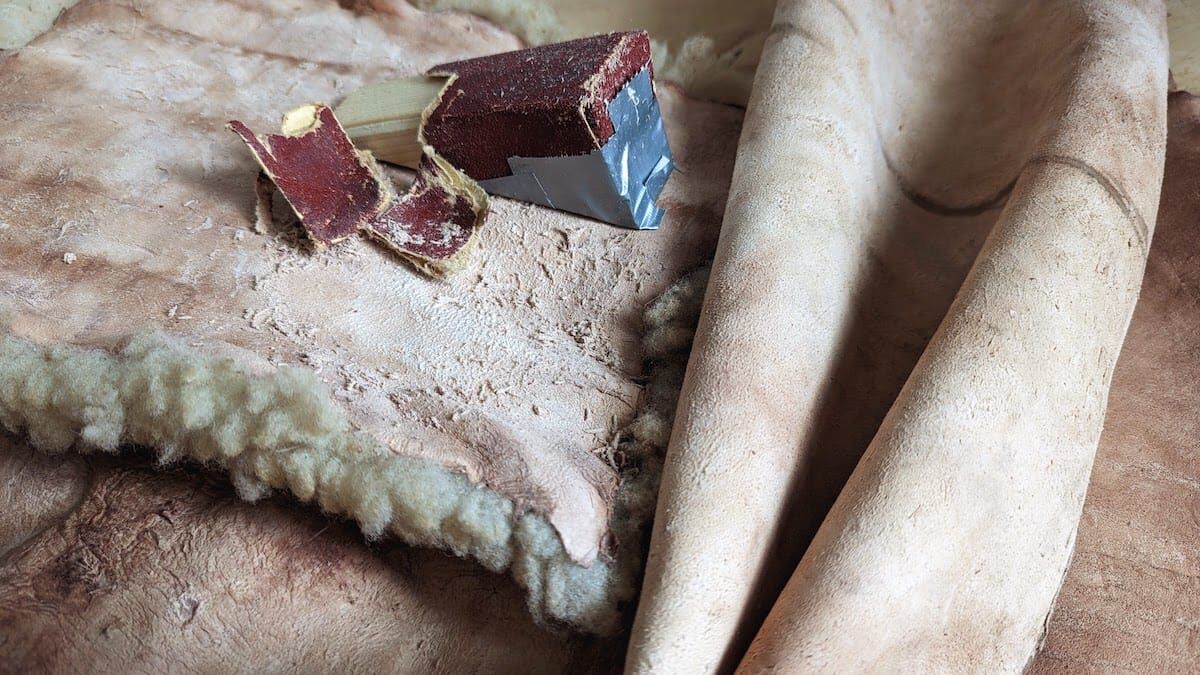
Do you really need animal products for your equipment? Wouldn't modern alternatives suffice?
For me, it is a matter of quality and respect for traditional craftsmanship. Modern alternatives may suffice in some situations, but the unique properties of leather and wool, tailored to my individual needs, and the accompanying appreciation are irreplaceable.
I believe that genuine, handmade products (that are 100% organic) are not only practical, but also expressive, authentic, and sustainable.
Are the animal materials you use organic and free from harmful chemicals?
Yes, I exclusively use natural tanning methods that have been practiced for centuries by indigenous peoples and in a traditional artisanal manner. These methods do not involve the use of harmful chemicals and respect the environment.
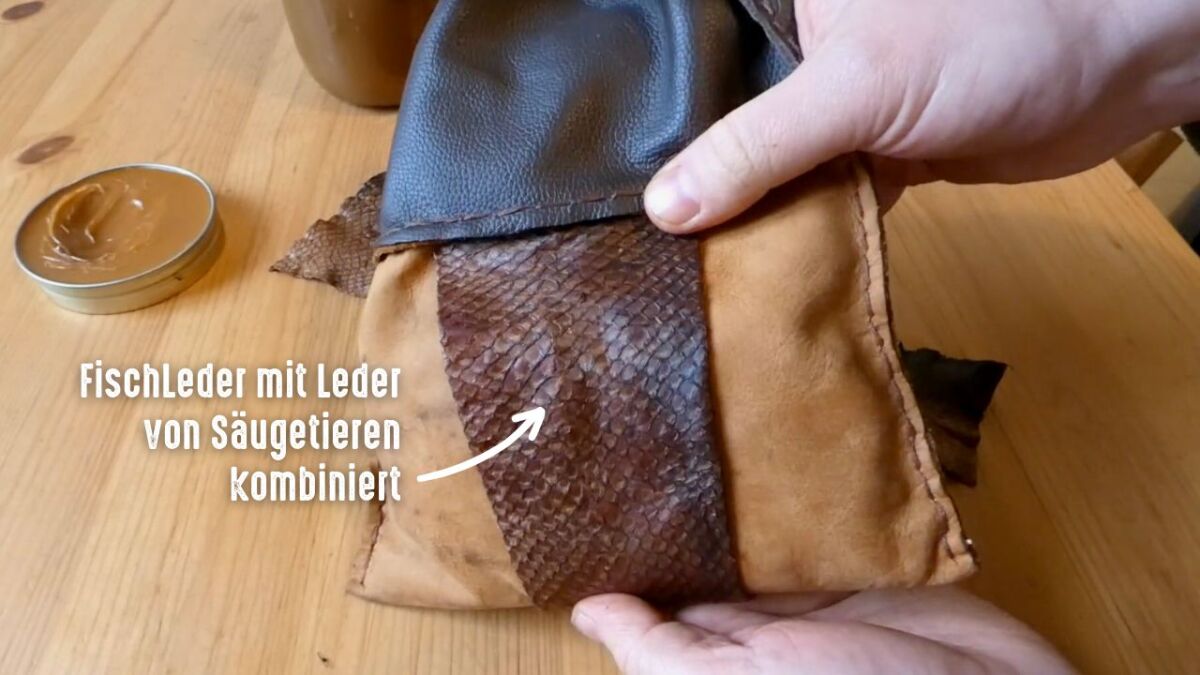
What we wear, also carries us
My journey with leather and wool has shown me that every decision matters.
- Quality over quantity: Buy less, but better. Durability above all.
- Knowledge is power: The more we know, the more consciously we can decide.
- Building connection: A respectful relationship with nature promotes responsibility.
Join and connect
You are now being asked. I invite you:
- Share your experiences: Have you started your projects? Tell us about them!
- Discuss concerns: Where do you see challenges in sustainable consumption?
- Learn together: We are here to learn from each other - let's do that.
And one thing I wish for in this regard: respectful and constructive exchange.
- Be friendly: Everyone starts somewhere. Support beats criticism.
- Be open: New perspectives can open our eyes.
- Be honest: Authenticity is the heart of our community.
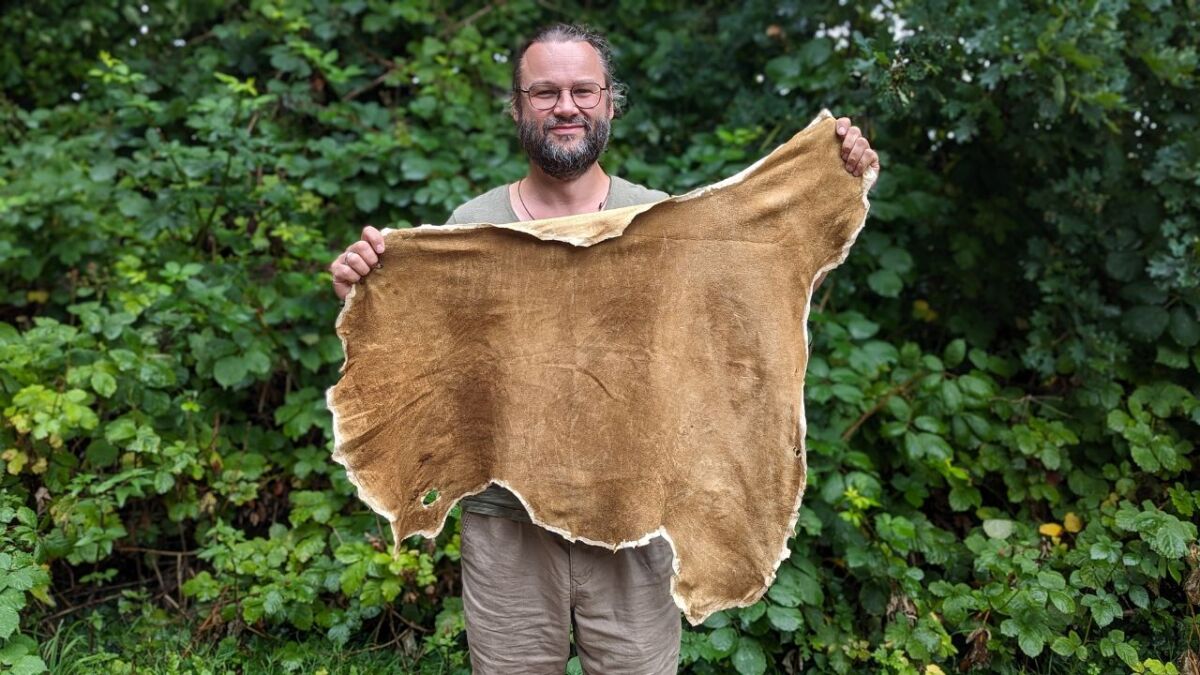
Authenticity carries me
Let's talk straight, cotton and plant fibers have their merits, but for me, it's about more.
It's about the connection to nature, it's about respect for life and celebrating ancient skills.
Leather and wool are not just materials to me - they are a commitment to real, tangible sustainability.
They embody the wild beauty of our planet and carry stories that go far beyond the label "organic".
To wear them, to work on them, means to me to be part of an eternal cycle, deeply rooted in nature and its principles.
And that's exactly the lifestyle I'm passionate about.
Well, what about you?
Do you feel the same passion for the original, for adventure, that arises from respectful craftsmanship?
Let's explore the paths less traveled together - with leather, fur, and wool.


Author of the guide
Martin Gebhardt
Hey, I'm Martin. On my blog, you will learn the basics and numerous details about living in the wild. I think survival, bushcraft and the good life in nature are the keys to happiness. Find me here on Instagram or on YouTube. You can find more about my mission on the About Me page.
Was this guide helpful?
22 people found this guide helpful.
5.00 out of 5 points (22 Ratings)
Comments (0)
This post may contain affiliate links. So if you click on the links and make a purchase, I will receive a small commission at no additional cost to you. Click here, to learn more about it.


